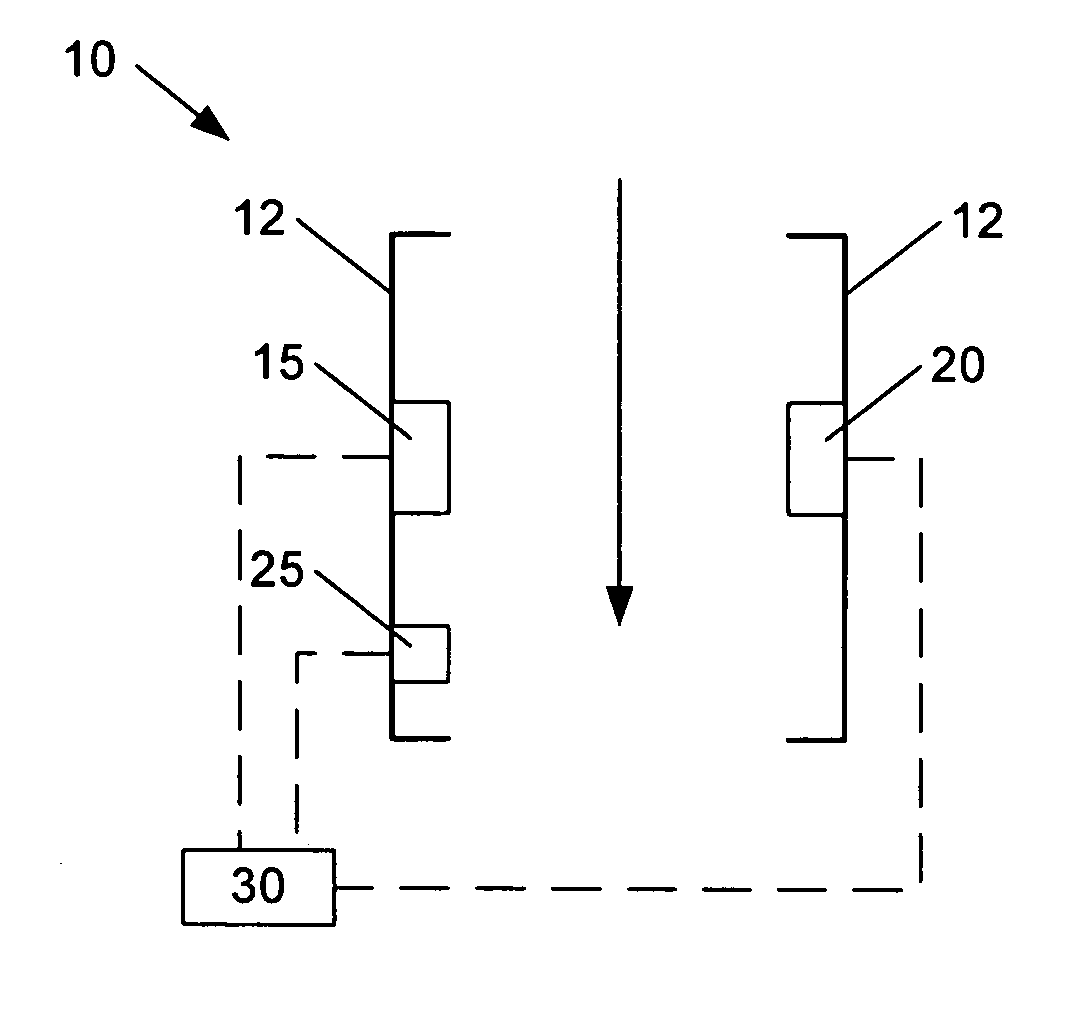Hydrogen concentration sensor for an electrochemical fuel cell
a technology of electrochemical fuel cells and concentration sensors, applied in fuel cells, material fluid analysis using sonic/ultrasonic/infrasonic waves, etc., can solve problems such as poor operating efficiency, and achieve the effect of reducing the speed of sound
- Summary
- Abstract
- Description
- Claims
- Application Information
AI Technical Summary
Benefits of technology
Problems solved by technology
Method used
Image
Examples
Embodiment Construction
[0020] The speed of sound in an ideal gas is given by the relationship:
v2=γRT / M (1)
where v is the speed of sound; γ is the adiabatic constant; R is the general gas constant (8.314 J / mol K); T is the absolute temperature; and M is the molecular mass of the gas in kg / mol. The adiabatic constant γ is the ratio of the specific heat of the gas at constant pressure to the specific heat of the gas at constant volume (Cp / Cv). For diatomic molecules like H2 and N2, γ=1.4 and for polyatomic molecules, γ=4 / 3.
[0021] In a typical fuel cell environment, the gases present are H2, N2, O2 and H2O. Table 1 provides the molecular masses of these gases with their corresponding speed of sound at 25° C. The principle source of variation between the speeds of sound between the gases arises from the different molecular masses of the gas. Differences in the adiabatic constant between gases is relatively small and thus a mixture of gases has a velocity that can be approximated to the weighted average of...
PUM
| Property | Measurement | Unit |
|---|---|---|
| frequencies | aaaaa | aaaaa |
| length | aaaaa | aaaaa |
| operating temperature | aaaaa | aaaaa |
Abstract
Description
Claims
Application Information
 Login to View More
Login to View More - R&D
- Intellectual Property
- Life Sciences
- Materials
- Tech Scout
- Unparalleled Data Quality
- Higher Quality Content
- 60% Fewer Hallucinations
Browse by: Latest US Patents, China's latest patents, Technical Efficacy Thesaurus, Application Domain, Technology Topic, Popular Technical Reports.
© 2025 PatSnap. All rights reserved.Legal|Privacy policy|Modern Slavery Act Transparency Statement|Sitemap|About US| Contact US: help@patsnap.com


